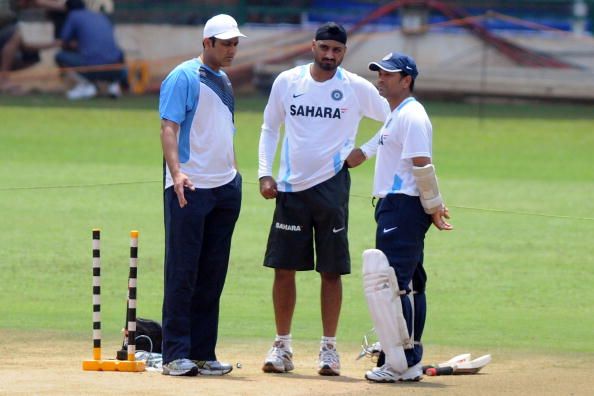
The evolution of the slower delivery
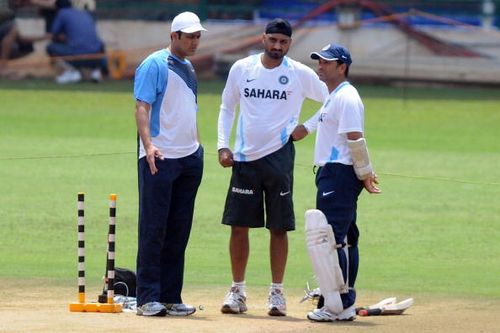
BANGALORE, INDIA – OCTOBER 08: Anil Kumble, (L) former Indian cricketer, Harbhajan Singh (C) and Sachin Tendulkar of India during an Indian nets session at M. Chinnaswamy Stadium on October 8, 2010 in Bangalore, India
Ever since the advent of limited overs cricket from the mid-1970s, cricket has evolved in many ways. And yes, a lot of people have started deeming it to be a batsman’s game, as a majority of the changes have been noticed in shot-making. With the advent of T20s, shots like the Dil-scoop, reverse sweep, switch-hit, paddle sweep and the much talked about ‘Dhoni’s helicopter shot’ are fast making an entry in coaching manuals across the world. The batsmen have become more comfortable playing across the line of the ball and they play unconventional shots with great control and efficiency. However, one aspect of the game which has always been ignored or not spoken about much is the evolution of bowlers and how this breed has developed and nurtured their game to survive in the contest of ‘Bat vs Ball’.
Fast bowlers have been an integral part of the game right from the start of its existence, and there is no better sight in cricket than to watch them run through a batting line up on their day. In the primitive days of Test cricket, bouncers, quick seaming deliveries, consistent line and length bowling and aggression used to be the key weapons employed by the fast bowling fraternity. Even without too many variations, they used to be feared purely because of the speed that they generated and the way they probed the best of players to step outside their comfort zones to either survive or score runs. In those days, there were no helmets, hardly any proper protective gear, and also the quality of bats was not even half as good as that today.
Along with the invention of limited overs cricket, protective gear like helmets, thigh pads, arm guards, chest guards, etc. also came into existence. With this, the fear factor in the batsmen somewhat decreased, and there was a serious threat to the fast bowling fraternity; they had to re-invent the wheel and come up with a solution. The solution, however, was more of a paradox – fast bowlers decided to use the ‘slower ball’ as a lethal weapon and as a variation to beat the batsman. Here is a look at the variety of slower ball variations that have come into existence over the last 2-3 decades, and which players have been the key exponents of these types of slower deliveries.
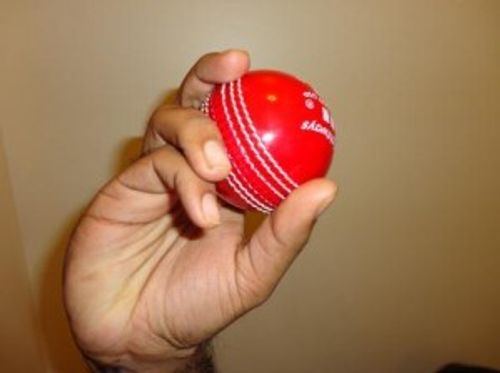 Slower off-spinner: Supposedly the most primitive form of the slower ball which was used initially by most Asian subcontinent fast bowlers in the mid-80s. Kapil Dev, Manoj Prabhakar, Imran Khan, Aaqib Javed, etc. were some of the early birds who used this weapon extensively. They used to bowl this predominantly in the death overs when the batsmen were looking to use the pace of the ball, and thus ended up playing it early. This ball is bowled with an off-spinner’s action where the bowler changes his grip at the last movement and uses his fingers/wrists to impart a tweak (from left to right for a right-arm bowler), which is similar to an off spinner’s stock delivery. Chris Cairns, the former New Zealand all-rounder, added this ball to his armoury, and disguised it really well. One of the weirdest dismissals in world cricket was seen when Chris Cairns bowled the English wicket keeper Chris Read off a slower delivery. Cairns had slowed it up and tossed it above the batsman’s eyelids and made him duck under it, thinking that it was a beamer. However, the ball dipped considerably and sneaked through the batsman’s legs to hit the stumps. Lasith Malinga is also a good exponent of this delivery.
Slower off-spinner: Supposedly the most primitive form of the slower ball which was used initially by most Asian subcontinent fast bowlers in the mid-80s. Kapil Dev, Manoj Prabhakar, Imran Khan, Aaqib Javed, etc. were some of the early birds who used this weapon extensively. They used to bowl this predominantly in the death overs when the batsmen were looking to use the pace of the ball, and thus ended up playing it early. This ball is bowled with an off-spinner’s action where the bowler changes his grip at the last movement and uses his fingers/wrists to impart a tweak (from left to right for a right-arm bowler), which is similar to an off spinner’s stock delivery. Chris Cairns, the former New Zealand all-rounder, added this ball to his armoury, and disguised it really well. One of the weirdest dismissals in world cricket was seen when Chris Cairns bowled the English wicket keeper Chris Read off a slower delivery. Cairns had slowed it up and tossed it above the batsman’s eyelids and made him duck under it, thinking that it was a beamer. However, the ball dipped considerably and sneaked through the batsman’s legs to hit the stumps. Lasith Malinga is also a good exponent of this delivery.
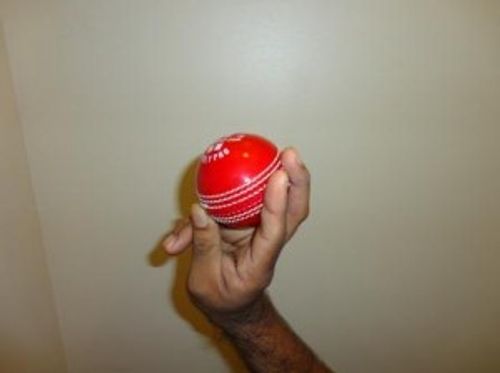 Slower leg cutter: After the off-spinner, the slower leg cutter came into existence in the early 90′s. It is bowled with the fingers cutting across the seam of the ball and just sliding it through at the point of release (from right to left for a right-arm fast bowler). The most prominent usage of this delivery was done by Venkatesh Prasad, the tall, lanky fast bowler from Karnataka who also went on to become the Indian team’s bowling coach in 2007. Prasad used this ball really effectively both in one-dayers and Test matches where he used to deceive the best of batsmen with his guile and change of pace. The delivery was not only slower through the air, but it also stopped and gripped the surface after pitching, which made it even harder for the batsmen to hit or connect. Pakistan’s Abdul Razzak also has good control over this delivery and of late, even Munaf Patel has bowled this delivery to good effect.
Slower leg cutter: After the off-spinner, the slower leg cutter came into existence in the early 90′s. It is bowled with the fingers cutting across the seam of the ball and just sliding it through at the point of release (from right to left for a right-arm fast bowler). The most prominent usage of this delivery was done by Venkatesh Prasad, the tall, lanky fast bowler from Karnataka who also went on to become the Indian team’s bowling coach in 2007. Prasad used this ball really effectively both in one-dayers and Test matches where he used to deceive the best of batsmen with his guile and change of pace. The delivery was not only slower through the air, but it also stopped and gripped the surface after pitching, which made it even harder for the batsmen to hit or connect. Pakistan’s Abdul Razzak also has good control over this delivery and of late, even Munaf Patel has bowled this delivery to good effect.
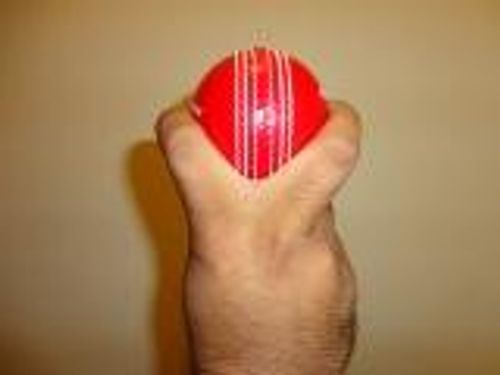 Split finger slower ball: This was one of the most interesting innovations tried out in cricket in the 90′s era. It is bowled with the index finger and middle finger being split as far as possible to get a tight grip and the seam pointing straight. When the ball is delivered, it looks like a regular seam-up delivery, but it is just a fraction slower through the air; it ends up being a floater which entices the batsmen to play early and get caught in front of the wicket most of the times. Adam Hollioake, the former England skipper, was the inventor of this kind of slower delivery. One of the most prominent dismissals that come to mind is the way he got out Steve Waugh, who was caught playing the ball early and holing out to mid-off in a one-day series Down Under. Dilhara Fernando is another bowler who mastered this delivery and bowled it effectively. Kings XI Punjab’s Paul Valthaty also uses this as a variation while bowling his medium pacers.
Split finger slower ball: This was one of the most interesting innovations tried out in cricket in the 90′s era. It is bowled with the index finger and middle finger being split as far as possible to get a tight grip and the seam pointing straight. When the ball is delivered, it looks like a regular seam-up delivery, but it is just a fraction slower through the air; it ends up being a floater which entices the batsmen to play early and get caught in front of the wicket most of the times. Adam Hollioake, the former England skipper, was the inventor of this kind of slower delivery. One of the most prominent dismissals that come to mind is the way he got out Steve Waugh, who was caught playing the ball early and holing out to mid-off in a one-day series Down Under. Dilhara Fernando is another bowler who mastered this delivery and bowled it effectively. Kings XI Punjab’s Paul Valthaty also uses this as a variation while bowling his medium pacers.
 Back-of-the-hand slower ball: This is probably one of the hardest slower deliveries to bowl for any fast bowler. It is bowled from the back-of-the hand, almost like a googly, but it is presented with a straight seam. The bowler grips the ball in his usual style till the delivery stride, but on delivery, he bowls it from the back of his hand. This significantly reduces the pace of the delivery and also makes it hold on to the surface after pitching. All this is done within a split second, with almost the same action and delivery stride, which can confuse and beat the best of batsmen. Because it is also presented with a straight seam, most of the batsmen get bamboozled and play slightly early. Ian Harvey, the former Australian medium pace bowler and lower order batsman, used this delivery to great effectm especially in the death overs. He used to mix it up with yorkers and conventional slower deliveries, and he refrained from bowling it too frequently in order to avoid the batsmen from predicting his tactics. This delivery has been added to the armoury of a lot of bowlers around the world and is being used extensively in T20 cricket. Some of the recent exponents of this delivery are England’s Jade Dernback, Australia’s Clinton Mckay, Pakistan’s Rana Naved and Sreenath Aravind from the Royal Challengers Bangalore.
Back-of-the-hand slower ball: This is probably one of the hardest slower deliveries to bowl for any fast bowler. It is bowled from the back-of-the hand, almost like a googly, but it is presented with a straight seam. The bowler grips the ball in his usual style till the delivery stride, but on delivery, he bowls it from the back of his hand. This significantly reduces the pace of the delivery and also makes it hold on to the surface after pitching. All this is done within a split second, with almost the same action and delivery stride, which can confuse and beat the best of batsmen. Because it is also presented with a straight seam, most of the batsmen get bamboozled and play slightly early. Ian Harvey, the former Australian medium pace bowler and lower order batsman, used this delivery to great effectm especially in the death overs. He used to mix it up with yorkers and conventional slower deliveries, and he refrained from bowling it too frequently in order to avoid the batsmen from predicting his tactics. This delivery has been added to the armoury of a lot of bowlers around the world and is being used extensively in T20 cricket. Some of the recent exponents of this delivery are England’s Jade Dernback, Australia’s Clinton Mckay, Pakistan’s Rana Naved and Sreenath Aravind from the Royal Challengers Bangalore.
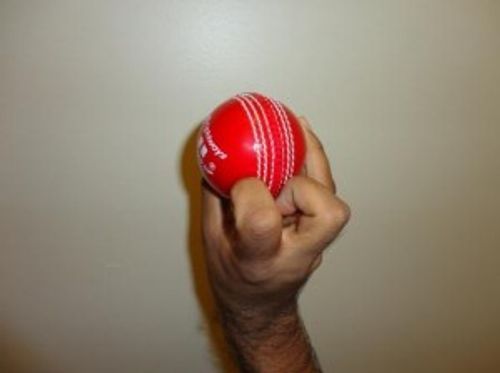 The Knuckle Slower ball: This is the latest addition to the gamut of slower deliveries in world cricket; it was invented very recently by Zaheer Khan. He had used it during the 2011 World cup where he famously dismissed Michael Hussey off this delivery in the quarter finals in Ahmedabad. It is bowled with the ball being gripped in an unusual manner where the knuckles of the index finger and the middle finger are used to provide momentum to the ball. It is a bit of a reinvented version of the famous carom ball which was bowled extensively by Ajantha Mendis. This delivery is equally deceptive and difficult to hit. Zaheer hides the grip of the ball with his non-bowling hand which makes it even more difficult for the batsman to premeditate or gear up to hit the ball.
The Knuckle Slower ball: This is the latest addition to the gamut of slower deliveries in world cricket; it was invented very recently by Zaheer Khan. He had used it during the 2011 World cup where he famously dismissed Michael Hussey off this delivery in the quarter finals in Ahmedabad. It is bowled with the ball being gripped in an unusual manner where the knuckles of the index finger and the middle finger are used to provide momentum to the ball. It is a bit of a reinvented version of the famous carom ball which was bowled extensively by Ajantha Mendis. This delivery is equally deceptive and difficult to hit. Zaheer hides the grip of the ball with his non-bowling hand which makes it even more difficult for the batsman to premeditate or gear up to hit the ball.
The Charles Darwin theory of survival of the fittest applies perfectly to the growing band of innovations in slower deliveries by fast bowlers over the years. The most successful of the lot have been the ones who have adjusted with the pace of the game and in turn changed their own pace to add some exciting variety to their bowling.